More from Dan McInerney about Engine 77’s house on the day it was closed. Descriptions for these images:
- several shots of the bunk room
- the officer’s room
- the locker room
- their last company patch
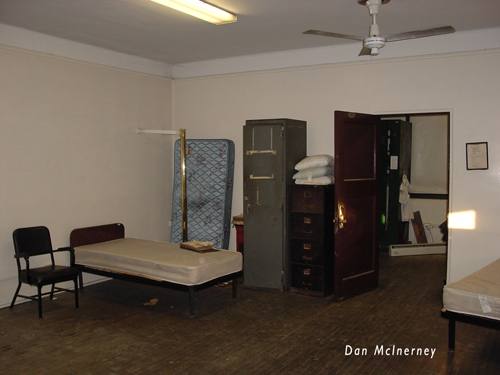
Dan McInerney photo
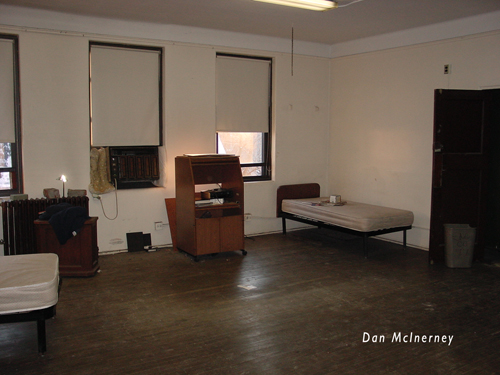
Dan McInerney photo

Dan McInerney photo
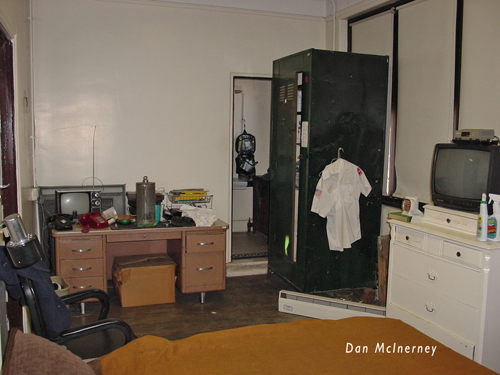
Dan McInerney photo
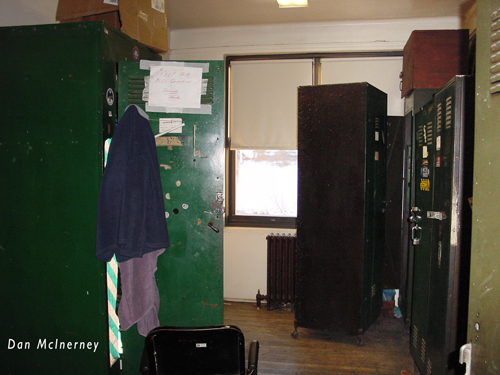
Dan McInerney photo
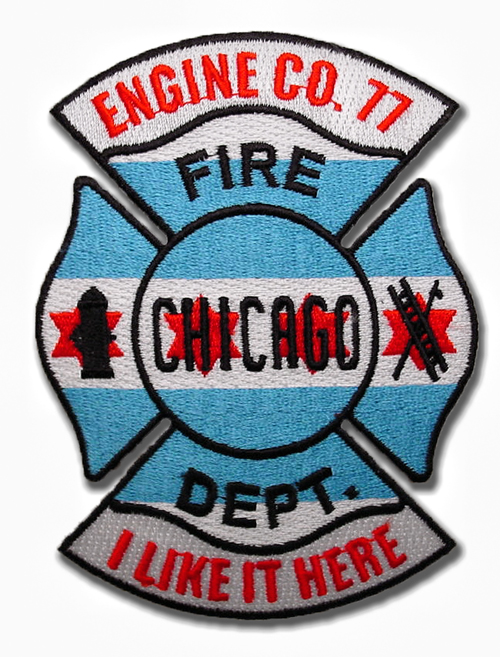
Dan McInerney photo






























#1 by tom sullivan on February 8, 2014 - 11:14 AM
comm. galante was never one to hold back on telling you what he thought of a particular situation, either at a fire/incident scene or an administrative function. if you made a mistake he told you straight out ! he had a vast amount of expierence, including SS-1 in their early years, capt. of truck 26, chief in the old (west side) 18th bttn, old 2nd division / dist. chief (again west side).
he would have been to many, many fires where e-77
operated. another of the old school bosses gone, rip.
#2 by Bill Post on February 8, 2014 - 3:21 AM
Mike Mc thanks for your compliment on my information on Engine 77 during the 1960’s. As long as you mentioned Truck 12 when they were with Engine 107 there is another station and companies that I wouldn’t leave out and that is Engine company 66 and Squad 7 (not to mention Snorkel Squad 3) which were located at 2858 W Fillmore ,only a block west of Engine 107’s current fire station. While Engine 66 was relocated out of their station on May 16th 1965 and Squad 7 was taken out of service to make room for the new Snorkel Squad 3. During 1964 (the last full year that Squad 7 was in service) they were the busiest Squad company in the city and they had gone out on 6,186 runs. 5,782 of the runs for fires and 404 of them were special duty runs. Many of the special duty runs were for “inhalator runs” (EMS service). Even though the ambulances were first due on inhalator runs the Squad companies would be dispatched when the nearest ambulance wasn’t available. The Squads also would be dispatched automatically on still alarms with the Engines and Trucks and they wouldn’t wait for a confirmation of a working fire like they do today.
It is ironic however that Snorkel Squad 3 would replace Squad company 7 yet when Snorkel Squad 2 was put in service on September 4 1963 ,Squad 3 remained in service even though they were only about and mile and a half west of Snorkel Squad 2 and both of them were assigned to the 16th Battalion and the 4th Division.
As to Fire Commissioner Louis Galante , I had just heard about it not more then a few hours before I read your comment on this site and am totally shocked and surprised that I couldn’t even find his obituary listed. On the Chicago Civil Defense website I had found out that he was cremated in Florida and had been living there.
In my opinion Fire Commissioner Louis T Galante was the Fire Chief was who singularly the most responsible for the way “Today’s” Chicago Fire Department operates. He was the one who introduced 2 Truck still alarms city wide, he was also the Chief who started the ambulance assist program and he was the one who resurrected the Snorkel Squads. Chicago had gone for 3 years without any Snorkel Squads before he became the Fire Commissioner. The Snorkel Squads of the 1980’s were done as an efficiency move but it made alot of sense considering how the straight Snorkel companies weren’t being used that often anymore. Commissioner Galante had also put in service Chicago’s first Tower Ladders (which are still around) and Chicago also had purchased two 135 foot Aerial Ladders when he was the Fire Commissioner. While Chicago (technically speaking) did
have a Hazardous Materials unit he had it upgraded into a fully manned and better equipped company with the help of the late Chief Ebersole.
The ambulance assist program helped to bring Chicago’s EMS system up to date as before that only ambulances would be dispatched on EMS calls and even if there was a cardiac arrest when the ambulance would arrive on the scene they would have to request a second ambulance to assist with the CPR so the drugs could be administered and the ambulance could be driven to the hospital by one of the paramedics off of the second ambulance.
The City of Chicago and the Chicago Fire Department owes alot to Louis Galante in my opinion.
Mike I was totally unaware of Commissioner Galante’s plans to build a new house for Engine 77 however under his administration an in house study was done in 1986 (as I had previous had written about) that would have had several new fire stations built on the far south side and would have relocated several companies further south as well as having a few Engines taken out of service in order to create some new Truck companies to better serve the far south side. The plans were to build a new stations for Engine 97, 75 and 93 (all with Truck companies assigned to the new stations) and another new station would have been built at 115th and Emerald which would have had an Engine company relocated there from the Central City and Truck 24 would have also been relocated there had it been built. These were recommendations from the Research and Planning department. Who knows if those proposals would have been followed had he remained the Fire Commissioner had he not been forced to resign in 1989.
The above information was based on an in house study done in 1986 and is not based on mere speculation.
#3 by Mike Mc on February 7, 2014 - 8:33 PM
Thanks for the historical perspective Bill. Engine 77 went from a garden spot in the early 1950’s to one of the busiest in the city. They were so busy that it was a popular place for out of town firefighters to ride because they were almost guarenteed to have working fires.
It was a densly populated area with a lot of three flats, balloon construction frames, and brown stones. Only a few feet separated the buildings and communications was always a problem. In addition to their still district, they were often second engine following 38, 95, and 107. They would also be a third or fourth engine on a still and box for a very large chunk of the west side. If Engine 77 went north their still truck was usually 26, if they went south it was always 48, and of they went east it would often be 12 (out of 107).
It was a very bad neighborhood. On new year’s eve 1973 a FF was wounded in the ear by a sniper (yes, a sniper with a rifle). Whenever the Bulls were on the verge of winning a championship, they would move Engine 77 to 95’s house so they would not be alone. The surrounding area literally burned itself out over a quarter of a century. Many, if not practially all of the empty lots were once the scenes of fires. Engine 38 still compiles a lot of runs, I am sure, because of their absence.
Fire Commissioner Galante wanted to build them a new house in the 1980’s. Galante believed that small, single engine houses still have a purpose in large cities. He had Engine 77 in mind as an example whenever he said that.
Bill: Speaking of Louis Galante, do you have any reflections on his passing?
#4 by Bill Post on February 7, 2014 - 3:51 PM
During the 1960’s Engine 77 was in your top 10 Engine companies when it came to runs and I’m pretty sure workers as well and they were often in the top 5 when it came to runs and (often times) workers.
An interesting fact about Engine 77 is while they were officially located in and assigned to the old 28th Battalion at 2111 s Hamlin (with Engine 38 and Truck 48) they were located less then a block from the border of the old 23rd Battalion and they were not more then 2 blocks from the border of the old 18th Battalion so they would be running with three different Battalion Chiefs quite often as they were located at the border and their first due area was split up between 3 Battalions.
As small as their fire station was from approximately April of 1961 through November of 1967 they were running with a second company assigned to their station and that company was usually Fog Pressure 1 which was somewhat of a mini pumper type of a rig, While for the first few months they had used a leased white over red Jeep Fog Pressure from the John Bean company how ever they were reassigned a traditional black over red International Harvester Fog Pressure apparatus which had a 300 gallon water tank and two booster reels with special Fog (gun style) nozzles on them which produced Fog streams and were used to knock down fires at their early stages as most of Chicago’s Engine’s weren’t equipped with booster (water) tanks at the time. The Fog Pressures were also used on the expressways because of their booster tanks and they were used to respond on street corner (pull) box alarms which were known as “check the boxes”. As most of the time they malicious false alarms pulled by neighborhood delinquents by late 1966/early 1967 they had reduced the check the box response to a single Engine company or a Fog Pressure during after school and early evening hours unless it was for a hospital ,nursing home or a major public building or institution.
Due to the high amount of both fires and false alarms on the West Side both Engine 77 ran with a Fog Pressure assigned to their station and Engine 95 which was located barely a mile north of them ran with a Fog Pressure assigned to their stations. The Fog Pressures normally ran with 3 men assigned to them which included an Engineer an officer and a firefighter.
As Engine 77 was given a new booster tank equipped Engine in the fall of 1967 the Fog Pressure was relocated to Engine 38.
in 1967 Engine 77 went out on 2906 incidents of which 2894 were fire runs and only 12 were “special duty” runs while in 1968 Engine 77 went out on 3502 runs of which 3483 were fire alarms and only 19 were “special duty” runs. A special duty run would be a non fire incident.
During April of 1968 the Dr Martin Luther King riots took place which explains why there were over 500 more runs for Engine 77 for 1968 as compared to 1967.
#5 by fmddc1 on February 7, 2014 - 9:46 AM
Tom, I never said “no one” liked it there……They loved it. It is true however that guy’s where sent there as sort of punishment. But that was many, many years ago. I knew guy’s who loved it there and guy’s who never left. Yes, they where extremely busy! I would have given anything to have been with that company! But hence ” we like it here” was a running joke. So I was ever told.
#6 by tom sullivan on February 7, 2014 - 8:45 AM
they liked it there because over the years there were a huge number of working fires. like several other old single engine houses in busy areas,,e-30, e-44, e-61, e-78, to name a few, there was (is) a certain atmosphere that went with the closeness, everybody seemed to work together well, there was nowhere to hide!
e-77 had many great guys over the years,, some went very high in the dept. dep. comms., dist.chiefs, ddcs., many more promoted. they learned firefighting at it’s most basic level there !
#7 by fmddc1 on February 7, 2014 - 3:48 AM
Josh, If my mind isn’t failing me “We never close” is just the 24 hr thing. The “We like it here” is cause guys used to be sent there as punishment. Because of it being a really small single house and it’s age and condition as well as it’s location, men where sent there who where…..well not well liked. Hope I’m right and that was helpful.
#8 by Josh Boyajian on February 6, 2014 - 9:30 PM
Question. Engine 77’s motto was “We never Close.” On the patch it says “I Like it here.” Do you guys know the meaning behind that? Just wondering. Thanks